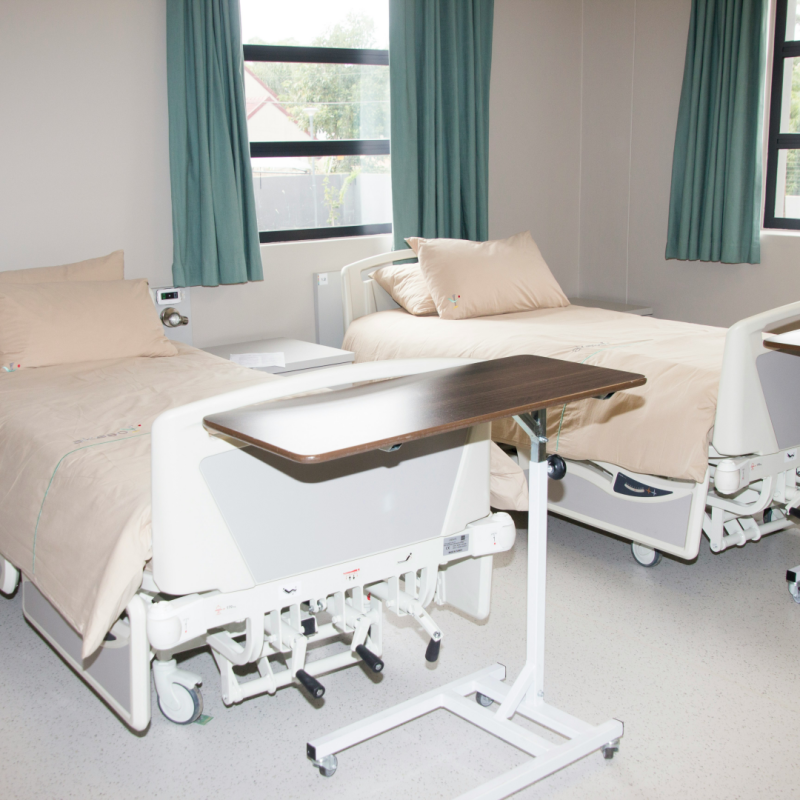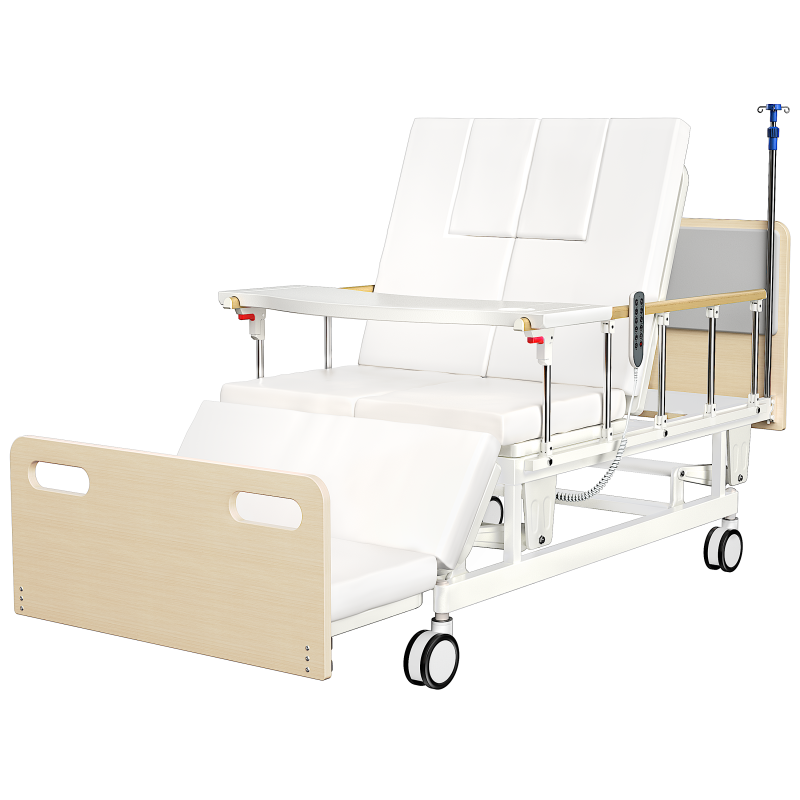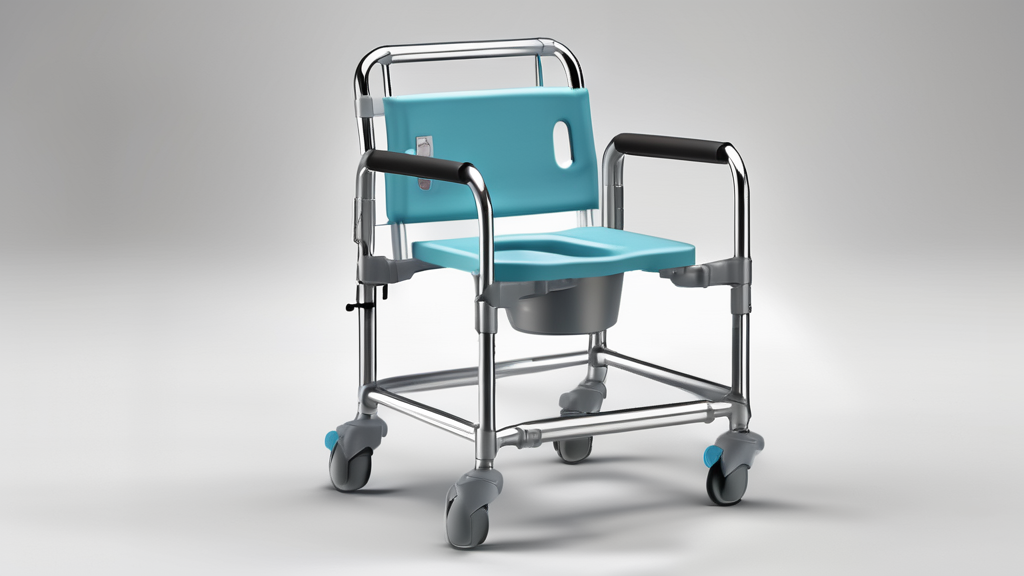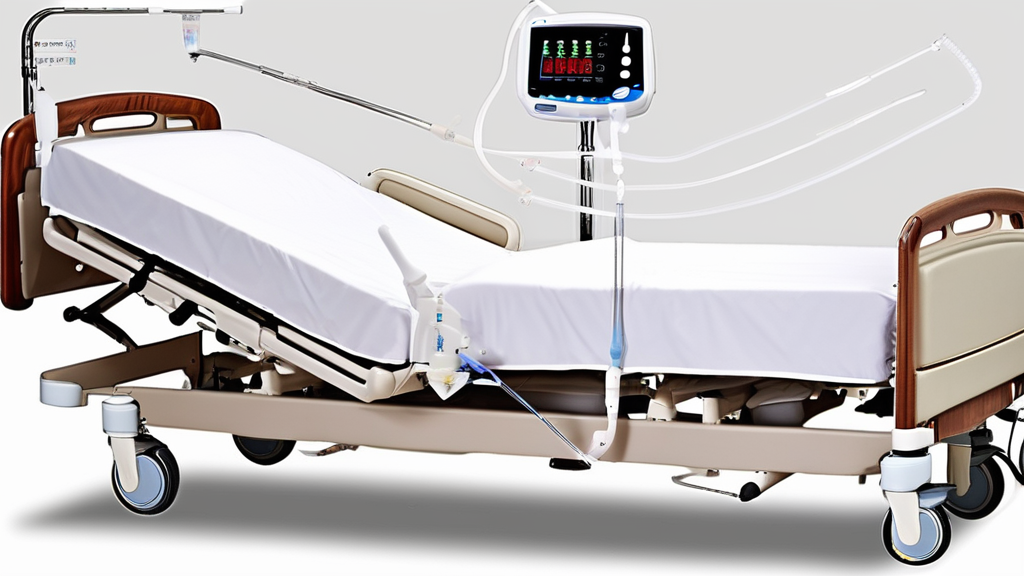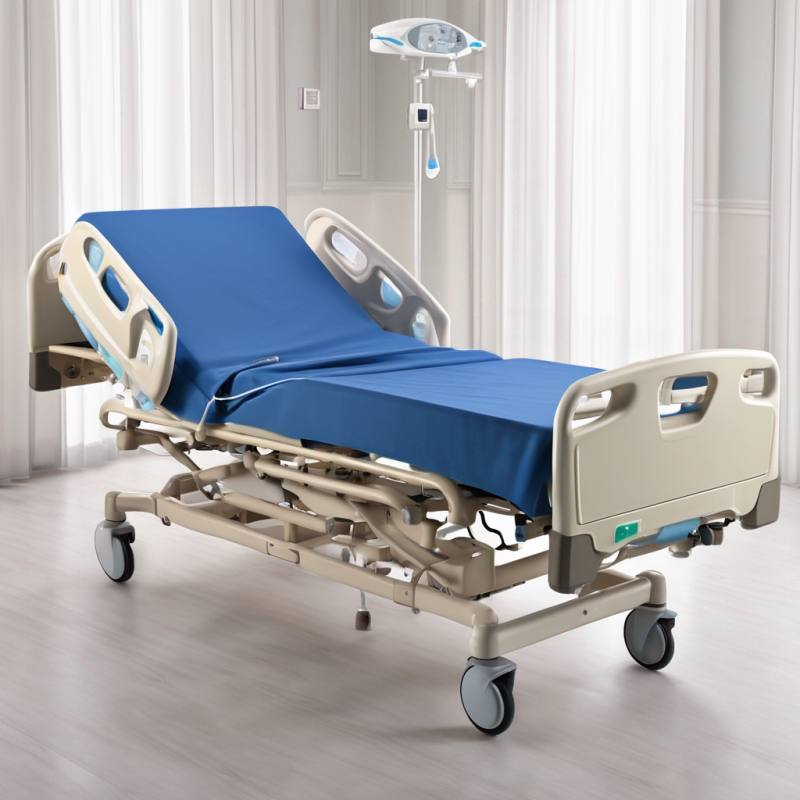Updated on March 30, 2025 19:22 pm EDT
2025 Guide: Choosing the Best Electric Hospital Bed & Adjustable Patient Bed for Home Use
When it comes to caring for a loved one at home, comfort, safety, and convenience are essential. A key piece of equipment in this regard is the hospital bed. Designed for patients with mobility challenges, chronic illnesses, or those recovering from surgery, hospital beds offer critical functionality to both caregivers and patients. In 2025, the options for home hospital beds have expanded, and now more than ever, there are options that cater to a variety of needs, budgets, and home care settings.
This guide will explore the different types of hospital beds available for home use, focusing on their specific features, benefits, and drawbacks. We will cover the most common types, including manual, semi-electric, and fully electric models, as well as bariatric, low, and Trendelenburg hospital beds. Our aim is to help you understand which hospital bed will best serve you or your loved one’s unique needs.
What Are Hospital Beds and Why Are They Important?
Hospital beds are designed to provide patients with maximum comfort, safety, and care during recovery. These beds are typically used by individuals who have difficulty getting in and out of bed, require frequent position changes, or need assistance in performing basic activities like sitting up, lying down, or shifting weight. These beds also offer adjustments to meet the patient’s specific needs, making them a vital piece of equipment for long-term care at home.
Hospital beds are equipped with adjustable features such as head and foot rests, height adjustments, and even tilt capabilities to assist with patient comfort, positioning, and accessibility. When choosing a hospital bed for home use, it’s important to consider the patient’s mobility level, physical needs, and the level of caregiving assistance required.
Types of Hospital Beds for Home Use in 2025
1. Manual Hospital Beds
Manual hospital beds are simple, cost-effective solutions for home care. These beds feature a hand-crank system that allows caregivers to adjust the bed’s height, headrest, and footrest manually. Although manual adjustments require physical effort, they remain one of the most affordable options for those on a budget. They are also beneficial in environments where access to electricity may be limited or unavailable.
One of the key advantages of a manual hospital bed is its simplicity and durability. These beds are easy to maintain, require fewer repairs, and can be a practical solution for patients who need occasional adjustments or for caregivers who can handle the manual adjustments. However, for patients requiring frequent repositioning or for caregivers with limited strength, manual beds may become inconvenient.
Best for: Budget-conscious families, occasional adjustments, and situations where power availability is an issue.
2. Semi-Electric Hospital Beds
Semi-electric hospital beds provide a good balance between affordability and functionality. These beds feature an electric motor that adjusts the head and foot sections of the bed, while the height remains adjustable via a manual crank. Semi-electric beds are a great choice for families that need some electric features but don’t want to pay the full price of a fully electric bed.
The primary benefit of semi-electric hospital beds is that they offer caregivers the convenience of adjusting the head and foot sections electronically, reducing physical strain. However, since the height adjustment is manual, caregivers will still need to exert some effort when changing the bed’s height. This makes them a great option for those who need some assistance but don’t require the full capabilities of an electric bed.
Best for: Patients who need frequent head or foot positioning adjustments but don’t require height adjustments, or families looking for a compromise between manual and fully electric options.
3. Fully Electric Hospital Beds
Fully electric hospital beds are the top choice for those who want maximum adjustability with minimal physical effort. These beds allow both the head, foot, and height sections to be adjusted electrically, all controlled by a remote or a simple button. Fully electric hospital beds are perfect for patients who require frequent repositioning or caregivers who want to reduce the strain of manual adjustments.
In addition to providing superior comfort for patients, these beds also allow greater independence. Patients can adjust their own position without needing assistance, which is ideal for long-term care settings. These beds also offer enhanced comfort, as they provide more precise control over the patient’s positioning, contributing to better comfort and pressure relief.
Best for: Patients who need frequent repositioning, caregivers looking to reduce physical strain, and those who want to prioritize patient independence in adjusting their own position.
4. Bariatric Hospital Beds
Bariatric hospital beds are designed for patients who weigh more than 350 pounds. These beds offer wider and stronger frames than standard hospital beds, providing the necessary support and stability for larger individuals. Bariatric beds come in manual, semi-electric, and fully electric models, allowing families to select the appropriate option based on their specific needs.
The additional space and enhanced weight capacity of bariatric beds make them essential for heavier patients, ensuring that they remain safe and comfortable during recovery. These beds also feature wider mattresses and reinforced support structures, which help prevent the bed from bending or buckling under increased weight.
Best for: Heavier patients who require extra support and more space for comfort.
5. Low Hospital Beds
Low hospital beds are designed to reduce the risk of injury from falls. These beds can be adjusted to a lower height than standard hospital beds, allowing patients to be closer to the floor. This lower height is especially useful for patients who are at risk of falling out of bed or those with limited mobility who need easier access to the bed.
For elderly patients or those recovering from surgery, low hospital beds provide a safer sleeping arrangement. In the event that a fall occurs, being closer to the floor reduces the risk of injury. Low hospital beds can also be a better option for patients who have difficulty getting in and out of higher beds.
Best for: Fall-prone patients, individuals with limited mobility, or those who require easy access to their bed.
6. Trendelenburg Hospital Beds
Trendelenburg hospital beds are equipped with advanced positioning capabilities that allow the entire bed to tilt at different angles. These beds are commonly used in medical settings for patients who need specialized care. The ability to tilt the bed enables doctors and caregivers to improve circulation, respiratory function, and manage fluid drainage effectively.
Trendelenburg beds are fully electric, offering maximum adjustability. These beds are often used in recovery or post-operative care settings and are designed to cater to patients who need very specific positioning for their medical needs. However, Trendelenburg beds tend to be more expensive than standard electric or semi-electric hospital beds due to their specialized features.
Best for: Patients requiring specialized medical care, such as improved circulation or respiratory support.
7. Adjustable Beds
Adjustable beds, although not traditional hospital beds, provide many of the same benefits. These beds offer the ability to adjust the head and foot sections, allowing patients to find the most comfortable position for sleeping or sitting. Adjustable beds are a good choice for individuals who don’t need the full functionality of a hospital bed but still want an adjustable sleeping surface.
Adjustable beds are also a popular option for those recovering from surgery or dealing with chronic conditions such as back pain or respiratory issues. They are often used in residential settings where patients still need some assistance with positioning but want to maintain a more home-like environment.
Best for: Patients with mild mobility or positioning needs or those looking for an alternative to traditional hospital beds.
Factors to Consider When Choosing a Hospital Bed for Home Use
Choosing the right hospital bed for home use requires careful consideration of several factors to ensure the bed fits the needs of both the patient and the caregiver. Below are some of the most important factors to keep in mind when selecting a hospital bed.
1. Patient’s Mobility Needs
The first factor to consider is the patient’s level of mobility. Patients who need frequent repositioning or assistance getting in and out of bed may require an electric or semi-electric bed. For patients who can move with minimal assistance, a manual bed may be sufficient. Understanding the patient’s mobility requirements will help determine whether a fully electric, semi-electric, or manual bed is most appropriate.
2. Space Availability
Hospital beds can be bulky, so it’s essential to ensure that your home has enough space to accommodate the bed. Make sure there is enough room for the bed to be adjusted without interfering with other furniture or causing obstacles for caregivers. Additionally, ensure that there is sufficient space for the caregiver to maneuver around the bed to assist with patient care.
3. Caregiver Strength
The strength of the caregiver is another crucial factor to consider when selecting a hospital bed. If the caregiver has limited strength or mobility, an electric or semi-electric bed may be more suitable. These beds will reduce the physical strain on caregivers and make it easier for them to assist with repositioning the patient.
4. Patient’s Weight
Patients who weigh more than 350 pounds will require a bariatric hospital bed. Bariatric beds are designed with reinforced support structures and wider mattresses to ensure patient safety and comfort. If the patient’s weight exceeds the standard weight limits for hospital beds, opting for a bariatric model is necessary to avoid potential safety hazards.
5. Fall Risk
For patients at risk of falling out of bed, low hospital beds are ideal. These beds can be adjusted to sit closer to the floor, minimizing the risk of injury in the event of a fall. Low hospital beds are especially helpful for elderly patients or those with limited mobility.
6. Budget
The cost of hospital beds can vary significantly, so it’s important to choose a bed that fits within your budget while still meeting the necessary needs. Manual beds tend to be the most affordable, while fully electric beds offer the highest level of comfort and convenience but come at a higher price.
Where to Buy Your Electric Hospital Bed
If you’re looking for a high-quality electric hospital bed for home care, consider the Epachois Electric Hospital Bed. This bed features adjustable height, headrest, and footrest capabilities, ensuring optimal comfort and care. Visit the official product page here:
Epachois Electric Hospital Bed for Home Use



